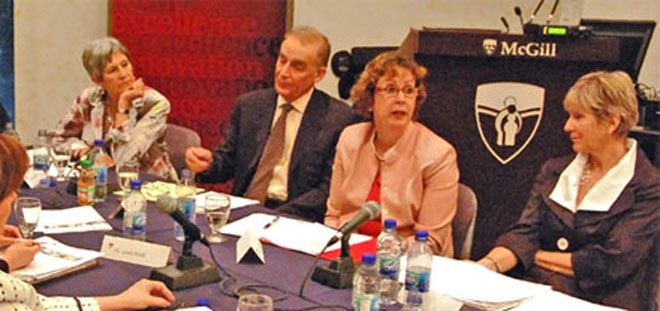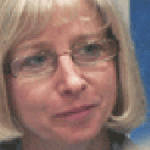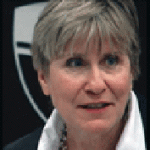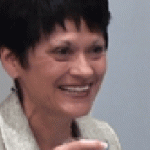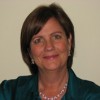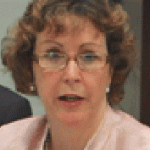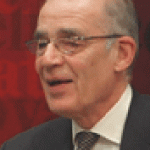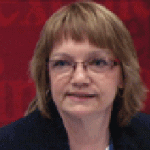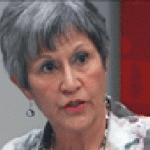By Ann Lynch, Madeleine Boulay-Bolduc, Francine Girard, Patricia O'Connor, Andréanne Saucier, Jeremy Sturgeon, Linda Ward, Jeanne Besner
As part of the 2009 program of the MUHC-ISAI, Health Innovation Forum assembled nursing leaders from within and outside the MUHC to look at how nursing roles are evolving to meet new needs and find out what stands in the way of progress. The discussion was chaired by Ms. Ann Lynch, Associate Director General of Clinical Operations and Nursing Affairs, MUHC. Participants were: Dr. Jeanne Besner, Director of the Health Systems and Workforce Research Unit with Alberta Health Services and Chair, Health Council of Canada; Ms. Madeleine Boulay-Bolduc, Associate Director of Nursing, Clinical and Professional Staff Development Service, MUHC; Dr. Francine Girard, Dean, School of Nursing, Université de Montréal; Ms. Patricia O’Connor, Associate Director of Nursing, Neuroscience Mission, MUHC; Ms. Andréanne Saucier, Associate Director of Nursing, Cancer Mission and Respiratory Services, MUHC; Dr. Jeremy Sturgeon, Director of Medical Oncology, MUHC; Ms. Linda Ward, President, Ordre de infirmières de Montréal/Laval, Associate Director of Nursing for Medical Services, MUHC
The McGill University network of hospitals has steadfastly promoted the need for strong professional nursing at the bedside, a stance recognized throughout Canada and Quebec. The MUHC pioneered roles in advanced nursing practice a full decade before their formal recognition by government, and is proud to be currently undertaking other initiatives to further develop nursing and interprofessional practice. The nurses assembled at the round table have each assumed leadership roles in advancing and improving nursing practice. Some of their specific initiatives are highlighted in separate articles. Discussion at the round table focused on some of the key issues facing the profession today: Education, role definition, and interprofessional collaboration.
Education
Canada’s registered nurses are instrumental in moving the health system towards better health promotion, disease management, and care coordination. In most parts of the country, it is now accepted that nurses must be better equipped at an educational level to play these roles. Over the past decade, most provinces have adopted baccalaureate entry to practice requirements for registered nurses. Only Manitoba and Quebec continue to license diploma-prepared nurses.
Dr. Jeanne Besner, Director of the Health Systems and Workforce Research Unit with Alberta Health Services, warned that convincing these two provinces to follow suit may be more difficult in the current climate. As president of the College and Association of Registered Nurses of Alberta (2003-2005), Dr. Besner played a role in influencing the change to baccalaureate preparation as entry to practice for registered nurses. Yet research has revealed that the failure of work environments to support full enactment of the role of baccalaureate prepared nurses has contributed to the absence of any observable difference between the practice of baccalaureate and diploma prepared nurses.
The message that resounded most clearly in the round table was that high expectations for nursing could not be fulfilled in clinical environments that remain focused on tasks and fail to incorporate new roles. Dr. Besner summed up this viewpoint by commenting that “we will never be able to demonstrate added value from better-trained nurses until practice is consistent with the content of a baccalaureate education.”
Dr. Francine Girard, Dean of Nursing at the Université de Montréal, did not expect much government support in Québec, where, she said, “the government believes that nurses are overeducated as it is, and moving toward ‘over-professionalization’.”
“Government wants to know that any new arrangement we come up with is cost-effective,” emphasized Ms. Lynch. “As we bring in more baccalaureates, we also need to think of how we’re going to bring in more licensed practical nurses (LPNs), and provide economic analysis as well as evidence that improves patient outcomes.” At the MUHC, 55% of nurses possess, or are in the process of completing, a baccalaureate degree in nursing.
Dr. Besner acknowledged the challenges involved in order for different nursing roles to work together more effectively. In Calgary, a demonstration model is currently underway in which registered nurses (RNs) and LPNs work together as a collaborative team rather than in silos, each with their own patient assignment. “We’ve found,” said Dr. Besner, “that RNs have to some extent lost the ‘art’ of communicating their assessment of risk factors and clearly expressing those in the development of care plans during patient rounds.”
Role definition
Dr. Besner has been studying nursing practice in the Calgary and other Health Regions for the past six years, and pinpoints the lack of clear role definitions as the biggest problem for the different levels of practitioners within nursing. Underutilization of skills appears not just in nursing, but also among other health care professionals. “All types of care providers feel they could contribute more than is being asked of them,” Dr. Besner reported. Many providers have a tendency to describe their role in terms of the sum of the tasks they perform. Given obvious overlap in the tasks performed by multiple providers, this failure to distinguish roles on the basis of differences in foundational knowledge across disciplines makes it difficult to articulate the unique contribution of each in delivery of care.
“Nurses have also witnessed a loosening of boundaries in the new integrated health networks,” said Ms. Madeleine Boulay-Bolduc, Associate Director of Nursing in the Clinical and Professional Staff Development Service at the MUHC. “They are struggling to juggle responsibilities and manage the workload.” Many nurses now commonly work outside hospital settings with differing partners, whether governments, regions or other institutions. But they are also expected to play a pivotal role on their units in ensuring quality of care and creating a supportive work environment. “Nurses need to be supported as they take on new roles, but also learn how to lay claim to the resources they need to fulfill them,” Ms. Boulay-Bolduc emphasized.
Dr. Besner feels that nursing is failing to advance the health and wellness aspect of its role as a complement to medicine, focusing on the psychosocial, spiritual, and cultural dimensions of health care. Currently, the emphasis remains centred on the biomedical element of practice. According to Dr. Besner, “patients and families won’t get the maximum benefit from healthcare until nursing expresses its complementarity and works in close collaboration with medicine and other medical professions.”
The value attached to that contribution shouldn’t be taken for granted. “Calgary’s new electronic health record doesn’t make it easy for nurses or other providers to document psychosocial, educational and cultural concerns that may impact care delivery,” stressed Dr. Besner. “We seem to have adopted a minimalist, strictly medical, record.”
Advanced roles
Along with moves to increase the responsibilities of registered nurses, there has been progress in creating advance practice roles for nurses as clinical nurse specialists and nurse practitioners. While significant variation exists between provinces in the number of these nurses graduating each year, any overall increase is impeded by a lack of support from government, health care institutions, and even universities. As Dr. Girard said, the decision was made virtually overnight that universities should create the nurse practitioner programs but positions are not yet in place for highly trained nurses when they graduate. “We have to ensure that clinical placements are available for these more educated graduates with appropriate supervision. Nursing has devolved itself of the responsibility to mentor the new generation, unlike physicians who continue to maintain that tradition,” said Dr. Girard.
Ms. Linda Ward, Associate Director of Nursing for the Medical Mission at the MUHC and newly elected President of the Montreal-Laval regional order of nurses, agreed that physician remuneration, the short-term vision of health organizations, and lack of administrative support, not legal issues, are the most important barriers to increasing the use of nurse practitioners in Quebec. “Quebec now has a total of 41 nurse practitioners, with a potential for 140 if we count nurses who are studying right now,” said Ms. Ward. “At the MUHC, outside of neonatology, there isn’t the critical mass needed to consolidate the role. But when you have the critical mass this new role contributes to ensure accessibility to care and continuity of care, to increase efficiency in patient care and it creates new career opportunities for nurses.” Ms. Ward highlighted the fact that nursing departments in the province do not have a specific or dedicated budget to create the needed new positions. Money must now be squeezed out of a department’s other cost centres to create advanced nursing positions.
One new nursing role in Québec that achieved critical mass very quickly is the infirmière pivot en oncologie (IPO or oncology nurse navigator). The number of practicing IPOs increased from 20 to 220 in just three years. Ms. Andréanne Saucier, Associate Director of Nursing for the Cancer Care Mission and Respiratory Services at the MUHC, highlighted some of the key factors for successful implementation. There was a clear goal in terms of meeting cancer patient needs and nurses took a proactive role in defining their ability to meet that need. Government not only supported the role but mandated a concurrent move to a team-based approach that incorporated IPOs. As well, said Ms. Saucier, “recognized oncology physicians got together and pushed the agenda.”
Dr. Jeremy Sturgeon was one of them. “Many years ago, we recognized that the diagnosis, treatment and continuing care of people with cancer was far too complex for one group of practitioners to monopolize. Physicians were ready a long time ago to share this role and forge partnerships with colleagues.”
Interprofessional collaboration
The incorporation of new nursing roles is part and parcel of a move to greater interprofessional collaboration in clinical practice. This, participants agreed, is where the evolution of nursing faces its greatest challenges and opportunities. As Dr. Girard pointed out, “If we think that one profession alone will pull ahead, we might as well close the doors immediately. We talk a lot about interdisciplinarity, but in practice we tend to fight amongst ourselves over silly territorial matters rather than organize with partners in other disciplines to advance collaboration.”
Dr. Sturgeon provided some helpful insight into physicians’ response to advanced nursing roles with the following anecdote:
When Princess Margaret Hospital (PMH), where I used to work, brought in its first nurse practitioner, we oncologists wondered what on earth she would do. Then we learned that she was going to take histories and do physical exams. Again, disbelief! How could she do that? We learned within a few weeks that not only were her histories and physicals more accurate and detailed than those by residents, she brought a new perspective that hadn’t ever been included. She told us how the patient and the patient’s family felt about what was going on.
The next issue had to do with nurses’ notes. It was decided that instead of nurses’ notes being on a separate part of the chart, they’d be integrated with the physician notes. This was revolutionary. At first doctors drew a line on the margin beside the physician notes to identify them and skip the nurses’ notes. But very quickly, the nurses’ notes changed. They no longer just said, ‘Had a good day, sat in a chair,’ and instead became very informative and detailed. Lo and behold, the physicians started reading them, and the lines in the margin of the page went away.
Dr. Besner saw this description as reflective of the main challenge in collaborative practice: having a strong sense of one’s own identity as a professional and knowing what it is that you are able to contribute that is of “added value.” The IPO role, for example, recognized the need in cancer for someone to navigate patients through an extremely complicated system, a need that was recognized by patients, physicians and government. As Dr. Sturgeon pointed out, “IPOs have unique abilities because they’re trained in this role. They support the patient throughout the whole trajectory of care, and they link people — all things that haven’t been done before. Teaching hospitals are notorious for failing to communicate with people outside the teaching hospital but the IPOs provide all these links to other caregivers and the community.”
“We need to become much clearer about what distinguishes us and adds value in different care contexts,” said Dr. Besner. “We’re not there because there’s a shortage of physicians. We’re there because there’s something that patients and families need that nurses can provide better than doctors or other members of the team.”
Teaching teamwork
Part of the challenge goes back to the way professionals are educated. “We prepare nurses, physicians, social workers, physiotherapists very separately,” Dr. Girard pointed out, “and give them a culture of their own. Then when they graduate we throw them together on a floor and say “Go, team go!” They don’t know how to do it.”
The Université de Montreal is taking steps to introduce all health professionals to interdisciplinary teamwork during training. This involves getting team members to think about what the other professionals contribute to care, working together on case studies, and putting together strategic care plans. “The next step,” said Dr. Girard, “is to prepare our clinical environments for communities of practice, where students will work as a team. The university aims to educate the clinical educators to serve as role models for these new teams. “ McGill University has a joint curriculum and interprofessional integration seminar.
Ms. Boulay-Bolduc considers it important to seize the opportunities created during practice reviews and harmonization as a chance to identify where nurses relate to other professions and bring groups together to evaluate new ways of working. “Working together, we can accomplish changes that haven’t been possible when tried by one profession alone.”
Ms. Saucier emphasized that government can play a significant role in encouraging interprofessional collaboration and the incorporation of advanced practice nurses. When instituting the new model for cancer care across Quebec, the provincial government stipulated interdisciplinarity and the presence of an IPO as part of the mandate for receiving accreditation as an Oncology Team under its new system. “Specific criteria were set to define interdisciplinarity,” said Ms. Saucier. “Each professional’s specific contribution to the team had to be spelled out and understood by other members.” All the existing oncology teams complied because they wanted to meet the new designation criteria. However, Ms. Saucier wondered whether the enthusiasm would persist. “It’s important at this stage to find out whether working in an interdisciplinary fashion makes a difference to the patient. This is the question physicians want answered.”
Who does what?
Hospital administrators charged with incorporating a range of expanded roles into clinical care need to balance the skill mix to ensure that all aspects of patient care are covered. If an APN for example takes on more high end work, what does she give up, and who assumes that job?
Dr. Girard thought that efforts to improve efficiency had to start by articulating the desired result for the patient. “Then we throw everything we do up for discussion, find ways to get rid of duplication, and ensure that every person in the team knows what’s expected of him or her.”
Participants discussed the new popularity of LEAN methodology in health care institutions. The big advantage Ms. Patricia O’Connor, Associate Director of Nursing in the MUHC Neuroscience Mission, sees in the practice is that it enables people to break out of routines and think differently about work processes. “It takes away the emotional baggage about territory,” she said, “allowing people to look at the work and determine what can be done most efficiently by each person. If part of it lies within an LPN’s scope of practice, for example, they will take that on and RNs won’t do it anymore.”
Round table participants agreed that LEAN processes must be guided by a clear vision and goals, with learning and development built into the process. “Institutions must invest the necessary time and effort for it to work,” said Ms. Lynch.
Efficiency gains can be impressive when work processes are reexamined. Dr. Girard described the Calgary Health Region’s effort to reduce the time people with hip fractures waited before having surgery. In 2003, people sat in hospital for between four and 54 days and had to move through 57 steps before having surgery. A six-month effort led by the vice president of the surgical department brought together physicians and staff to examine the processes that contributed to these long waits. Working together, they succeeded in decreasing the number of steps to 17. The Region was then able to guarantee that a person with a hip fracture would have surgery within 24 hours 99.7% of the time.
Ms. Boulay-Bolduc emphasized the need to look beyond professional groups and include support services in the reexamination of work roles. She is now in the pilot phase of introducing a complex practice change that relates to supplies, after finding that nurse managers were spending an enormous amount of time searching out equipment. The initiative brings together staff from logistics, stores and finance in order to find a way to handle things differently. “We adopted a more centralized approach on one patient unit,” said Ms. Boulay-Bolduc, “where support services deliver the equipment to the unit and ensure that the nurses have exactly what they need at the time they need it. The nurse manager will no longer be involved in ordering and following up on equipment.”
Ms. O’Connor studied a number of examples of interprofessional collaboration as part of her Commonwealth Fund Harkness fellowship research. What she witnessed in the Collaborative Care Unit at ThedaCare in Wisconsin was an actual change in medical practice resulting from close collaboration among physicians, nurses and pharmacists.
“In Wisconsin,” she described, “nurse, physician and pharmacist go into the patient room together upon admission to complete the history, physical exam and medication reconciliation.” The latter process, as a result, is now error-free. Daily interprofessional bedside rounds ensure maximal input and collaborative care planning, directly engaging the patient and family members. “Each professional brings their specific expertise to the care process.” Unlike the clinical pharmacist who is available for consultation but never actually sees the patient, at ThedaCare pharmacists are in the room daily and listening to the nurse do a thorough history. “This changes what the pharmacist recommends,” said O’Connor. “All three practitioners stated that they actually changed their decisions because they had real time information and the opportunity to consult together instead of reading the chart three hours down the line.”
Proving benefit
There have been many motivators behind the recent evolution of nursing. But the impact of these measures is as yet unknown. Research to date has failed to demonstrate much effect. As health professionals, universities and governments invest time and money in these initiatives, it becomes increasingly important that ways be found to further study the outcomes — for patients, health professionals, and budgets— of advanced nursing roles and collaborative care models. Some believe this will be difficult to do until solid models of care are developed that fully utilize new nursing capabilities, and until outcome measures take into account the variables affected by nursing practice. For this to happen, the culture of research among nurses needs to be cultivated and supported.
Immediate priorities recognized by round table participants
- Match responsibilities in clinical setting more closely with educational requirements.
- Develop and implement mentorship programs for more educated graduates within the clinical environment.
- Research the impact of baccalaureate and advanced practice nurses in environments where their full abilities are utilized.
- Create a given number of nurse practitioner positions in each relevant department to allow the position to be integrated into unit work.
- Encourage Deans of Nursing, Medicine, Pharmacy, Nutrition, Rehabilitation to work together closely to elaborate interprofessional education programs.



